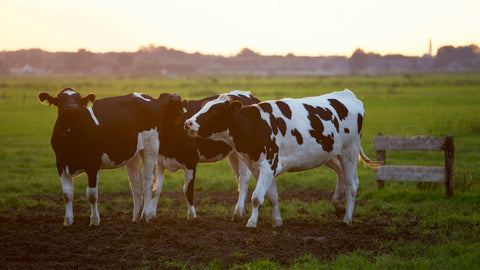Is Well Water Safe to Drink?
More than 40 million people in the United States have well water, which differs significantly from the water you might drink in a bigger city. What does it even mean to have well water, though? Is it safe to drink? How can you ensure that you and your family are using only the cleanest water available to you?
This blog will answer these questions and more.
What is Well Water?
First, let’s start with what a well is.
A well is a hole that’s drilled into the ground for the purpose of accessing water, which is stored in something called an aquifer. Pipes and a pump are used to get the water out of the ground. From there, the water is filtered to remove anything that could potentially block the pipes.
There are various types of wells that differ in size, shape, and the materials used to build them. For example, some wells are drilled into rock, while others are drilled into soil, sand, or clay. These wells are typically a few hundred feet below the ground.
When a home has well water, that means there’s a well on that property that provides water for drinking, bathing, using the toilets, and so on. And that’s what well water is!
On the contrary, if you live in an urban area, then you’re most likely using water from the city’s system, as opposed to a well. We’ll come back to this in a minute.
So, Is Well Water Safe to Drink?
Cities are probably dirtier than more rural areas, right? So, well water should be the ideal solution, right? Well, not exactly.
Here’s the tricky part. Public water systems are held to specific regulations when it comes to keeping the water safe to use and consume. These regulations do not apply to well water. It’s entirely up to the property owner to ensure the water is safe. And, remember that the water is still vulnerable to anything and everything that’s seeping into the ground, including pesticides, bacteria, viruses, and both natural and manufactured chemicals. These pollutants can come from animal waste, sewage, and even contaminated rain and snow. (No, you shouldn't assume that rain and snow are clean!)

Can well water be safe to drink? Yes, but it’s important to stay on a strict schedule when it comes to testing the water. For certain contaminants, you test once a year. For others, it’s once every five or so years. If you’ve experienced a flood, or there’s a lot of construction in the area, test more often. And if anyone in your family starts experiencing health problems, test the water immediately.
On that note…
What are the Signs of Contaminated Well Water?
There are certain warning signs that your well water might be contaminated:
- You can actually see particles in the water that look like they could be dirt, rust, or clay. Not only can these particles clog up the pipes and pumps of the well, but they can make you sick. And this also means that there are more particles you can’t see, which can be even more dangerous to your health.
- The water is cloudy. This could be a result of dirt, rust, or other particles in your well water. Your well water should be clear.
- You smell odors like chlorine, detergent, or even rotten eggs. These are indications of the presence of different pollutants. For instance, if you smell chlorine, a common culprit is pesticides.
- It tastes soapy, metallic, salty, or chemical-like. These are yet another indication of contamination, which could result in health problems and damage to the water system. So, if your water tastes funny, don’t ignore it.
- There’s a greasy, oily film on the surface of the water. The cause could be excess minerals in your well water.
- You’re finding stains in your sinks and on your clothes. If everything is turning brown, red, or green, there could be something acidic in your water or too much iron.
- There’s a buildup of scale or scum on your faucets and showerheads. It’s often white and can indicate excess minerals. Not only is it a pain to clean, but you certainly don’t want to be drinking or bathing in that!
To see what your water is made of, you need a testing kit with strips that check for common contaminants as well as the overall pH. But is this enough?
Why Water Purification Matters

Whether your water comes from a well or the public system, contaminants can and do make their way into your home’s supply. In fact, there might be all kinds of dangerous particles lurking in your tap water. These include microplastics and metals (like steel, copper, iron, and aluminum), and depending on the land practices in your area, fertilizers, pesticides, and livestock could compromise the quality of the water you drink and bathe in.
“I’m not worried. I have a refrigerator water filter,” you might be saying.
“No big deal. My Brita filter can handle it,” you’re thinking.
But wait. Here’s the problem. These types of filters aren’t nearly powerful enough to remove the microscopic particles making their way into your tap water. And remember, it’s the stuff you can’t see that can actually be more dangerous, as backward as that sounds.
It takes something more effective to ensure that your water is crystal clear and safe: reverse osmosis (RO). In a nutshell, in the reverse osmosis process, water is forced through an incredibly fine screen — so fine that nearly nothing can pass through it but water molecules. Without reverse osmosis, particles are getting left behind. When you have a glass of water, bathe, or brush your teeth, you’re exposing yourself to these contaminants.
A home — whether it gets well water or city water — without a reverse osmosis water filter is ill-prepared for contaminants. What are you drinking?